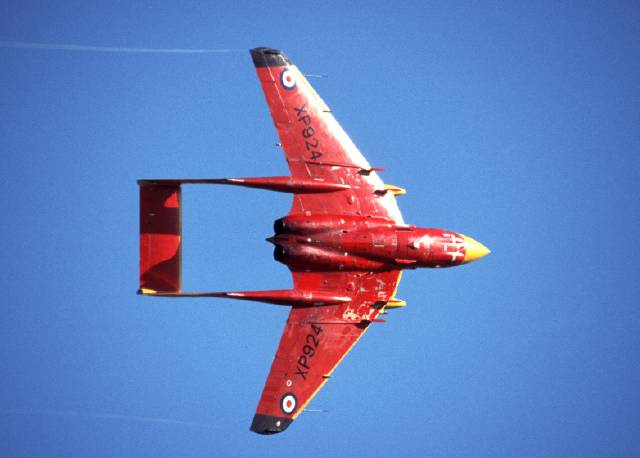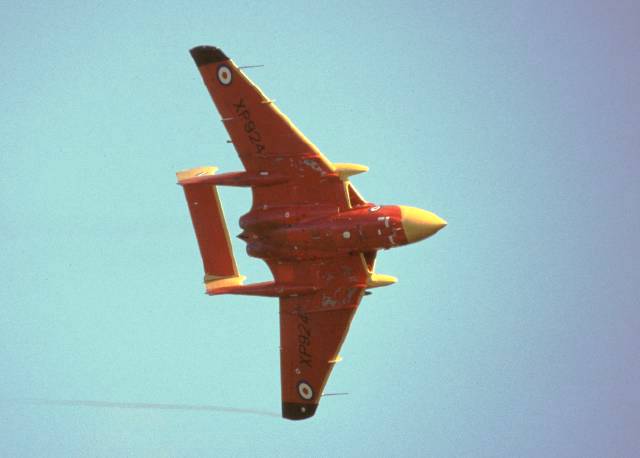|
The bright colours of this aircraft, compared to the normal dark sea grey upper and white under-belly of operational aircraft, is due to it having been converted into a D.3 pilotless target drone and given the standard colour scheme for that role of yellow upper surfaces and red belly.
As the last front line Sea Vixen squadron 899 disbanded in January 1972 after leaving HMS Eagle their remaining aircraft were alloted to drone conversion and found their way to Farnborough. Only three completed conversion, XN 657, XP 924 (seen here) and XS 577, before (so the story goes) some bright spark realised that there is no way that a Sea Vixen could be made to imitate a Mig. Why did it take so long to realise that, I wonder! More likely is that the money allocated, always short, ran out and cheaper alternatives could be made available. These Vixen drones were, in the event, never flown pilotless but with an often passive pilot for training ground controllers.
|


